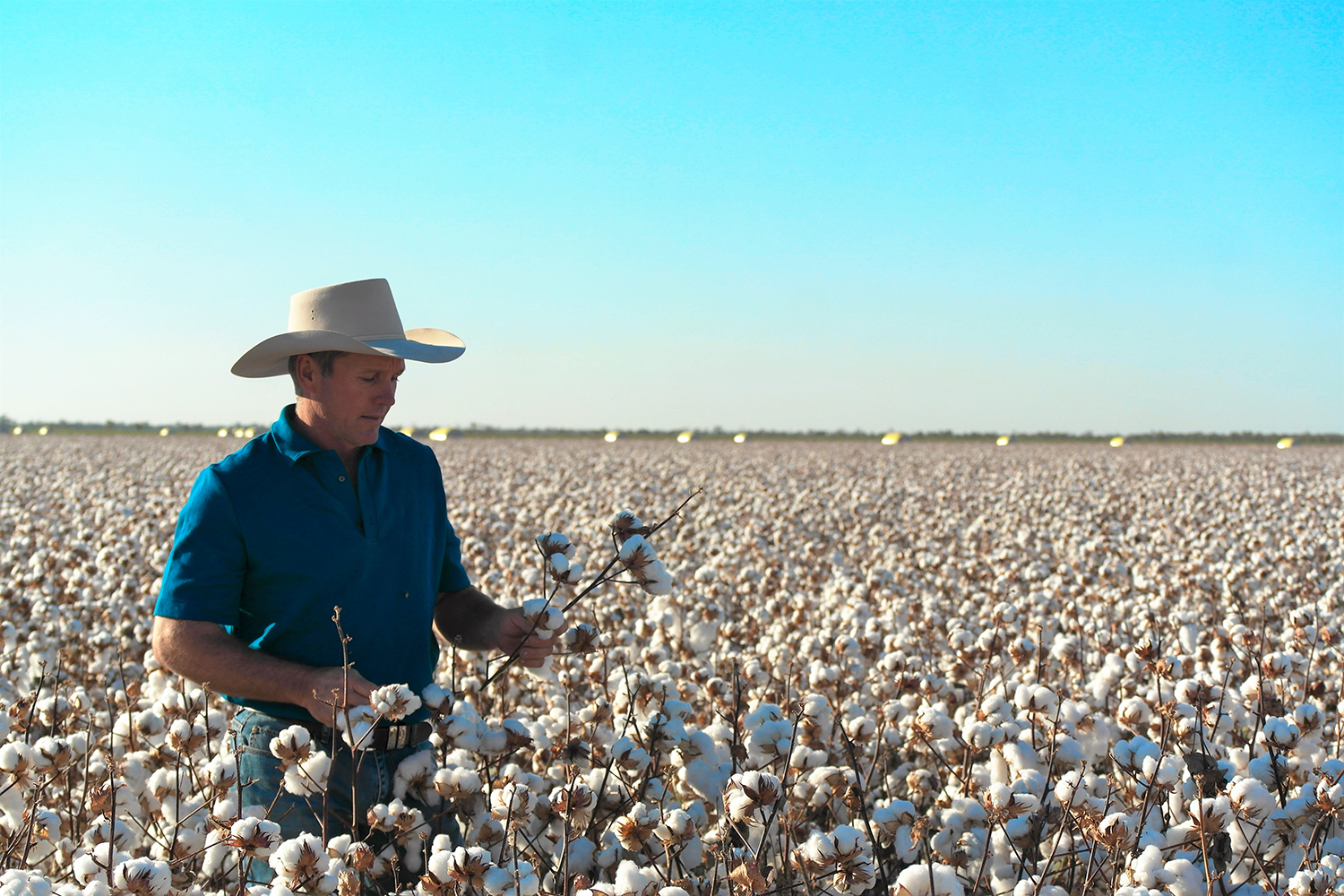Grow, harvest, clean, spin, weave, dye, design, sew and market. All these stages in the creation of clothes are largely outsourced to industrial processes that have cotton garments appear almost by magic for 21st century wearers buying on demand. JANE MILBURN reports.
About 90 percent of clothes bought in Australia are made overseas yet spinning is the only one of these processes that Australia can’t do right here, right now, today.
If we were to reintroduce onshore spinning capacity, this would enable local processing as well as recycling capacity to create a closed-loop fibre economy saving textiles from landfill.

Glenn Rogan in his Australian Super Cotton field at St George.
Until recently, most wearers were not thinking about the missing stages of repair and recycle that can help make the journey of clothes more circular and reduce their ecological impact. Now we are asking more questions, taking actions and seeking solutions.
With increasing concerns about climate change and pollution, the circular economy is poised to grow and Australia needs to be part of it. Manufacturing has been migrating offshore for decades, but pandemic disruption of supply chains may herald a turning of the tide.